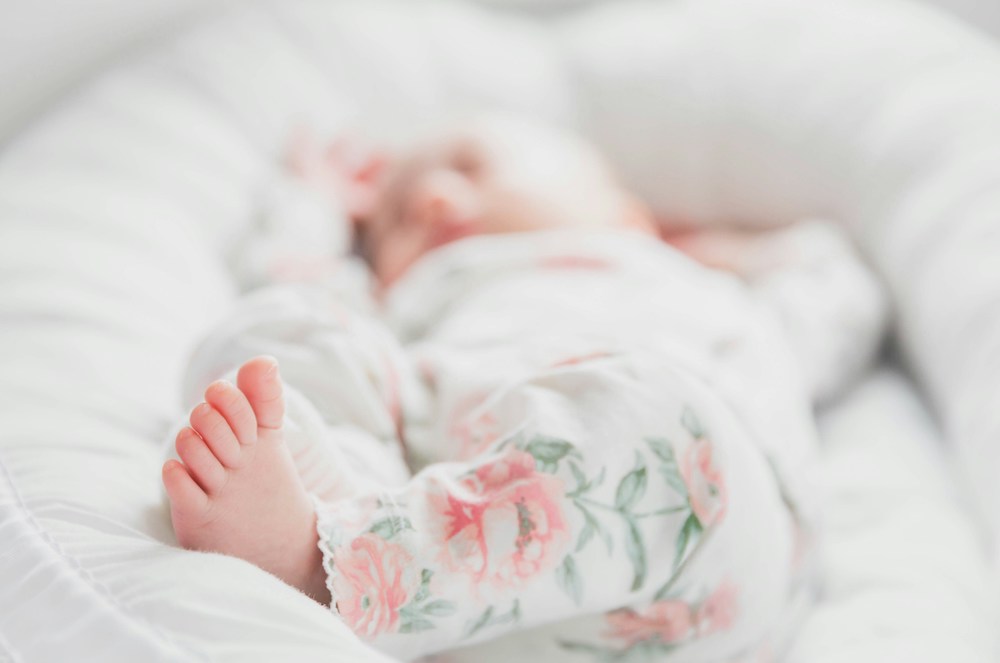
21 Oct Reducing the Risk of Sudden Unexpected Infant Death (SUID)
Every year in the U.S., about 3,500 babies die from Sudden Unexpected Infant Death (SUID). All of these tragic deaths are unexpected, while many are accidental from unintended injury or accident.¹
What is Sudden Unexpected Infant Death (SUID)?
The first year of a baby’s life is filled with risks because she is so vulnerable and dependent on caregivers for her health and wellbeing. This is a time when babies are at particular risk for Sudden Unexpected Infant Death (SUID), which is a blanket term that includes infant deaths as a result of known and unknown factors.
Unknown factors are categorized as Sudden Infant Death Syndrome (SIDS). The reason for SIDS is unknown but thought to be related to problems in the infant’s brain that control breathing and waking up from sleep. Other forms of infant death are usually known factors, often related to injury or accident while in the sleeping environment. These tragic cases involve: suffocation (from blankets, pillows, toys), strangulation (from cords, sheets, toys), entrapment/wedging (between wall, mattress, positioning devices), or overlay (smothering through co-sleeping).
How to Reduce the Risk of Sudden Unexpected Infant Death
Thankfully, parents these days have the benefit of research studies that have provided the latest evidenced based recommendations to reduce the risk of sudden infant death. As a parent, you’ll want to ensure all your baby’s caregivers follow these guidelines:
- Back is best (put baby to sleep on his back)
- Choose a firm, flat mattress covered with a fitted sheet
- Keep toys, blankets, pillows, bumpers, wedges out of the crib. Check Consumer Product Safety for product details.
- Dress baby in breathable layers (cotton onesie plus sleep sack). Avoid overheating through overdressing/bundling.
- Stop swaddling once the baby is showing signs of rolling over (about 3 months).
- Breastfeed for at least 6 months. The longer you breastfeed, the more protected your baby is from SIDS.¹
- Introduce a pacifier after breastfeeding is well established. If formula feeding, introduce a pacifier at any time. Pacifiers are thought to improve autonomic control of infant breathing and possibly prevent rolling during sleep.¹
- Sleep in the same room as your baby, not the same bed. Co-sleeping increases the risk of smothering, overlay and entrapment, especially when parents are affected by drugs or alcohol.
- Put your baby to sleep in a crib, bassinet or portable play yard.
- Quit smoking. Smoking during pregnancy significantly increases the risk of SIDS, as well as secondhand smoke exposure in the car or home.²
While there are advanced heart and breathing monitors marketed to new parents to reduce anxiety around sudden infant death, none have been FDA approved to prevent SIDS. To date, the best measures to reduce SUID are following these simple guidelines and ensuring all your baby’s caregivers are on board too!
October is SIDS Awareness Month. Follow the SafetoSleep campaign to help build awareness.
REFERENCES:
- American Academy of Pediatrics (AAP). 2022. How to keep your sleeping baby safe: AAP policy explained. https://www.healthychildren.org/English/ages-stages/baby/sleep/Pages/a-parents-guide-to-safe-sleep.aspx
- The National Institutes of Health (NIH). Ways to reduce baby’s risk. https://safetosleep.nichd.nih.gov/reduce-risk/reduce
- Photo by Tuva Mathilde Løland on Unsplash. Baby In White and Red Floral Onesie Lying on Bed: https://unsplash.com/photos/baby-in-white-and-red-floral-onesie-lying-on-bed-FHon8lLKibM?utm_content=creditShareLink&utm_medium=referral&utm_source=unsplash




